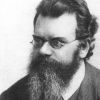10 General Relativity Books That Shape Scientific Minds
Recommended by Kip Thorne, Brian Cox, and Reinhard Genzel, these General Relativity books offer authoritative insights into Einstein’s legacy and modern physics.



What if you could unlock the secrets of the universe by understanding the very fabric of spacetime? General Relativity, Einstein’s revolutionary theory, continues to reshape how we perceive gravity, black holes, and cosmic evolution. Today, its principles guide cutting-edge research and inspire generations of physicists pushing the boundaries of knowledge.
Leading minds such as Kip Thorne, the Feynman Professor at CalTech and Nobel laureate, have long championed foundational texts like Gravity and Gravitation, which bring clarity to complex concepts. Meanwhile, Brian Cox, known for bridging particle physics and cosmology, praises accessible introductions that illuminate connections between astrophysics and relativity. Nobel laureate Reinhard Genzel highlights texts that link theory to groundbreaking observations, such as gravitational waves and black hole imaging.
While these expert-curated books provide proven frameworks, readers seeking content tailored to their specific background, learning goals, or focus areas might consider creating a personalized General Relativity book that builds on these insights, blending authoritative knowledge with your unique interests and pace.
Recommended by Brian Cox
Professor of Particle Physics at University of Manchester
“@rationalist44 (1) is easy - there are two components, but for distant galaxies the so-called ‘proper motion’ is negligible. (2) You need a little GR. Look up cosmological redshift. The best intro text book in my view is Hartle - the calculation is in section 18.2.” (from X)
by James B. Hartle··You?
by James B. Hartle··You?
Drawing from decades of experience in gravitational physics, James B. Hartle developed an approach that flips the usual teaching of general relativity on its head. Instead of starting with heavy mathematics, this book dives into the physical phenomena that make Einstein's theory so fascinating—black holes, warped spacetime, and cosmological expansion—making complex topics more tangible. You’ll gain a clear understanding of core concepts like gravitational waves and cosmological redshift, guided by accessible examples such as the calculations in section 18.2. This text suits physics majors who want a meaningful introduction without being overwhelmed by abstract math, though those expecting a purely theoretical treatment might find it less suitable.
Recommended by Kirk Borne
Principal Data Scientist, PhD Astrophysicist
“#Gravity is the only one of the four fundamental forces of #Physics that doesn’t (yet) have a quantum explanation — learn how our understanding of Gravity has evolved, from Newton’s great insight to Einstein’s: 👇See this gravitationally heavy 3-kg book👇” (from X)
by Charles W. Misner, Kip S. Thorne, John Archibald Wheeler, David I. Kaiser··You?
by Charles W. Misner, Kip S. Thorne, John Archibald Wheeler, David I. Kaiser··You?
Drawing from the collective expertise of physicists Charles W. Misner, Kip S. Thorne, John Archibald Wheeler, and historian David I. Kaiser, this tome offers you a rigorous, geometric approach to Einstein’s general relativity. It goes beyond basics, guiding you through both foundational concepts and advanced topics like black holes and gravitational waves, with a dual-track structure catering to different depths of study. Chapters on spacetime curvature and gravitational collapse equip you to grasp complex physics and perform relevant calculations. This book suits those committed to mastering relativity with mathematical precision rather than casual curiosity.
by TailoredRead AI·
This tailored book explores the foundational principles and advanced concepts of Einstein’s theory of General Relativity, crafted to match your background and learning goals. It dives into spacetime curvature, gravitational phenomena, and black hole physics, drawing from core physics fundamentals and contemporary developments. Through a personalized approach, it focuses on your specific interests, making complex topics like tensor calculus and gravitational waves accessible and engaging. By bridging expert knowledge with your unique needs, the book offers a guided journey through the elegant mathematics and physical insights that define relativity, helping you build a deep, intuitive understanding of the subject.
Recommended by Reinhard Genzel
Nobel laureate, Max Planck Institute
“Several generations of students have benefitted from the first two editions of Professor Bernard Schutz’ beautiful introductory textbook on tensor algebra, manifolds, physics in curved space times, and Einstein’s field equations. Why another edition now? The answer is that, in the last years, precision measurements of stellar orbits around the central massive black hole in the Galactic Center, the detection of gravitational waves from in-spiraling binary black holes and neutron stars with LIGO, and the detection of the central ‘radio wave shadow’ of the supermassive black hole in the galaxy M87 have suddenly opened the magical world of strongly curved spacetime to precision experimental tests. These experiments and much more to come from ground- and space-based gravitational wave studies have started a renaissance of interest in Einstein’s theory.” (from Amazon)
by Bernard Schutz··You?
by Bernard Schutz··You?
Bernard Schutz draws on decades of experience in gravitational physics to offer an accessible yet rigorous introduction to general relativity. You’ll learn foundational concepts like tensor algebra, manifolds, and Einstein’s field equations through clear explanations and worked examples, making complex math approachable. The book also dives into contemporary discoveries, such as gravitational waves and black hole observations, illustrating how theory connects with cutting-edge astrophysics. With over 300 exercises, it’s designed to build your confidence in both the mathematics and physics, making it well-suited for advanced undergraduates or anyone ready to tackle relativity beyond the basics.
Recommended by David Tong
Professor, University of Cambridge
“A timely book which offers a simple and clear introduction to the theory of general relativity and its modern applications to cosmology, astrophysical black holes, and the exciting field of gravitational wave astronomy.” (from Amazon)
Mike Guidry's decades as a physics and astronomy professor culminate in this textbook, designed to demystify Einstein's general relativity through an example-driven approach. You’ll learn to navigate complex concepts like black holes, gravitational waves, and cosmology using hundreds of worked examples and explanatory boxes that clarify the math and physics behind these phenomena. The book balances theory with application, making it especially useful if you’re diving into astrophysics or gravitational physics for the first time. If you’re seeking a solid foundation in modern general relativity with practical problem sets, this text is tailored to support your learning journey without unnecessary jargon.
Recommended by Sean Carroll
Caltech physicist; Author of Spacetime and Geometry
“General relativity is the most beautiful physical theory we have, and plays an increasingly central role in modern physics. Carlo Rovelli’s introduction is both concise and comprehensive, written by a master of exposition as well as of the material. I envy anyone encountering these ideas for the first time.” (from Amazon)
by Carlo Rovelli··You?
by Carlo Rovelli··You?
Unlike most books on general relativity that dive deeply into heavy mathematics, Carlo Rovelli’s concise introduction prioritizes conceptual clarity to illuminate the core ideas behind Einstein’s theory. You’ll explore fundamental topics such as black holes, gravitational waves, and cosmology, gaining insight into both the physical phenomena and philosophical implications. The book also offers a glimpse into quantum gravity, bridging classical and modern physics perspectives. If you have a background in physics or a strong curiosity beyond popular science, this text strengthens your understanding without overwhelming technical detail.
by TailoredRead AI·
This tailored book explores the core principles and applications of General Relativity, designed to match your background and learning goals. It reveals the fundamental concepts of spacetime curvature, gravitational effects, and black hole physics, all presented in a way that resonates with your interests. By focusing on your specific needs, the book offers a clear pathway through complex ideas, helping you grasp Einstein’s revolutionary theory efficiently and effectively. The personalized content connects theoretical foundations with modern observations, including gravitational waves and cosmology, to deepen your understanding of this transformative subject.
by Norman Gray··You?
by Norman Gray··You?
Norman Gray, a seasoned researcher and lecturer at the University of Glasgow, crafted this guide to clarify the essentials of general relativity for students navigating the subject’s mathematical and conceptual challenges. You’ll delve into core concepts like differential geometry and the covariant derivative, essential tools for grasping Einstein’s equations, all presented without unnecessary complexity. The book’s emphasis on balancing technical rigor with accessible explanations makes it ideal if you're looking to strengthen your foundational understanding or need a concise refresher alongside more comprehensive texts. Those comfortable with special relativity and eager to bridge toward more advanced studies will find its worked examples and problems especially beneficial.
by Edwin F. Taylor, John Archibald Wheeler··You?
by Edwin F. Taylor, John Archibald Wheeler··You?
Drawing from his deep roots in physics education and collaboration with John Archibald Wheeler, Edwin F. Taylor offers a focused exploration of general relativity centered on black holes and curved spacetime. This book equips you with the mathematical tools—calculus and algebra—to actively engage with the concepts rather than passively absorb them. Through five foundational chapters and seven hands-on projects, you’ll work through computations and investigations that build your understanding step-by-step. If you’re an astronomer, mathematician, or curious learner ready to move beyond popular science into quantitative analysis, this book provides a clear path into the complexities of black holes and relativity.
by Anthony Zee··You?
by Anthony Zee··You?
A. Zee's decades as a physics professor at the Kavli Institute shape this concise exploration of gravity through Einstein's general theory of relativity. You learn how gravity waves were discovered and how gravity compares with other classical fields, with clear explanations of curved spacetime and the action principle. The book also ventures into black holes, Hawking radiation, and the frontiers of quantum gravity and dark matter. If you seek a focused yet approachable tour of gravity’s mysteries, Zee's blend of precision and warmth offers insights without overwhelming technicality, ideal for those ready to deepen their understanding beyond basics.
Recommended by Paul Davies
Physicist, Orion Productions, Australia
“This is a brilliant book. Dray has an extraordinary knack of conveying the key mathematics and concepts with an elegant economy that rivals the expositions of the legendary Paul Dirac. It is pure pleasure to see far-reaching results emerge effortlessly from easy-to-follow arguments, and for simple examples to morph into generalizations. It is so refreshing to find a book that does not obscure the basics with unnecessary technicalities, yet can develop sophisticated formalism from very modest mathematical investments.” (from Amazon)
by Tevian Dray··You?
by Tevian Dray··You?
Drawing from decades of research in general relativity and differential geometry, Tevian Dray offers a distinctive approach to understanding Einstein's theory. Instead of relying on tensor calculus, Dray introduces differential forms to explain core concepts with minimal mathematical overhead, making the material accessible to those familiar with just calculus and linear algebra. You’ll find the first half of the book delivers surprising insights into relativity’s implications, while the latter half deepens your grasp of the underlying mathematics, especially curvature. This book suits advanced undergraduates or beginning graduate students who want a fresh, mathematically elegant perspective rather than traditional formalisms.
by Albert Einstein··You?
by Albert Einstein··You?
Albert Einstein's decades of pioneering work in theoretical physics culminate in this text that unpacks the foundations of both his special and general theories of relativity. You explore how space and time intertwine and how gravity emerges from the curvature of spacetime, concepts that challenge everyday intuition and reshape physics. The book distills complex ideas into logically structured chapters, making it accessible to those ready to grapple with profound scientific principles. If you're curious about the universe's fundamental workings and can engage with abstract reasoning, this book offers a direct window into Einstein's revolutionary perspective.
Get Your Personal General Relativity Guide ✨
Skip generic advice—get targeted strategies tailored to your learning goals.
Trusted by leading physicists and educators worldwide
Conclusion
These 10 books collectively chart a journey from foundational concepts to the frontiers of modern physics. They reveal how Einstein’s equations translate from abstract mathematics to observable phenomena like gravitational waves and black holes. Whether you're grappling with tensor calculus or curious about the philosophical implications, this collection offers something for every serious learner.
If you're just beginning, starting with Gravity or A Student's Guide to General Relativity can ground you in core principles without overwhelming complexity. For those ready to deepen mathematical rigor, Gravitation and Differential Forms and the Geometry of General Relativity provide elegant, thorough treatments. For practical astrophysical applications, Modern General Relativity and Exploring Black Holes bridge theory with observation.
Alternatively, you can create a personalized General Relativity book to bridge the gap between general principles and your specific situation. These books can help accelerate your learning journey and deepen your grasp of one of physics' most profound theories.
Frequently Asked Questions
I'm overwhelmed by choice – which book should I start with?
Start with Gravity by James B. Hartle for an accessible introduction that balances physical intuition with manageable math. It’s highly praised by Kip Thorne and Brian Cox for easing newcomers into general relativity's core ideas.
Are these books too advanced for someone new to General Relativity?
Not all. A Student's Guide to General Relativity offers a clear, approachable path for beginners, while more advanced texts like Gravitation suit those ready for deeper mathematical rigor.
What's the best order to read these books?
Begin with conceptual texts like Gravity or General Relativity: The Essentials, then progress to mathematically intensive works such as Gravitation and Differential Forms and the Geometry of General Relativity.
Should I start with the newest book or a classic?
Balance is key. Newer editions like Bernard Schutz’s A First Course in General Relativity incorporate recent discoveries, while classics like Gravitation provide foundational depth valued by experts.
Which books focus more on theory vs. practical application?
Gravitation and Differential Forms emphasize theoretical foundations, whereas Modern General Relativity and Exploring Black Holes connect theory with astrophysical applications and problem-solving.
Can I get tailored insights for my specific interests in General Relativity?
Yes! While these expert books offer rich knowledge, you can create a personalized General Relativity book that adapts concepts to your background and goals, blending expert insights with your unique learning needs.
📚 Love this book list?
Help fellow book lovers discover great books, share this curated list with others!
Related Articles You May Like
Explore more curated book recommendations









